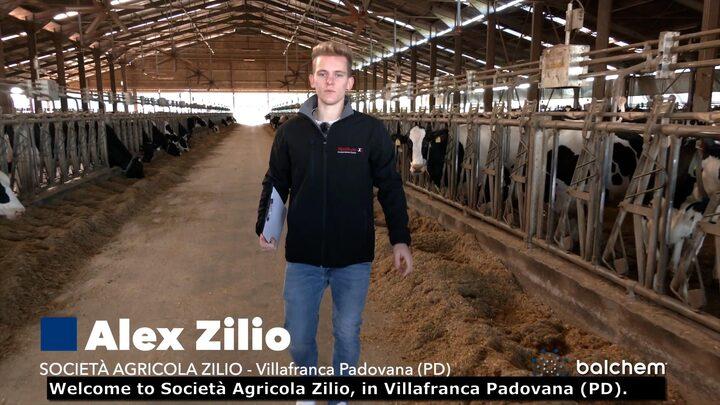Explore all the information on
Dairy cattle ruminal performance
Welcome to the page about Dairy cattle ruminal performance of Engormix; a source of knowledge on Dairy cattle ruminal performance.
Introduction Accurate predictions of nutrient supply and nutrient requirements are essential to modern ration formulations and animal production. Accurate and precise models allow provision of nutrients to meet requirements for maintenance and optimal production without supplying excess nutrients that contribute to inefficiency or environmental damage. Most nutrient models predict...
Comments : 0
Recommendations: 4
Over the past 30 years, the concept of establishing requirements and evaluating nutritional adequacy by use of nutritional models for dairy cattle has taken over the feed industry. Private companies, universities, feed companies, governments and even individual nutritionists have developed models. It will be the purpose of this paper to look at some concepts governing nutritional modeling, recommend some techniques for evaluating a model, and look at a few...
Comments : 1
Recommendations: 3
Take Home Messages By-product feeds can provide nutritional and economic benefits for dairy managers. Pricing and positioning are key focus areas to consider. Several questions must be managed for on-farm success. Feed variation must be considered when building dairy rations using by-product feeds. ...
Comments : 1
Recommendations: 8
Dr. Jim Quigley, Director of Calf and Heifer at Cargill, spoke to us and explained how to obtain a well developed rumen through balanced nutrition, during the Dairy Cattle Breeding and Rearing Symposium in Buenos Aires, Argentina. ...
Comments : 1
Recommendations: 0
Background A recent study by the SDSU Dairy and Food Science Department investigated the effects of water quality on heifer preference and drinking behavior. Providing good quality water to livestock is a major challenge in the Midwest. Eastern South Dakota groundwater, which is used for drinking, industry, and agricultural purposes is hard, with high mineral content. Calcium and magnesium concentration affects this hardness....
Comments : 0
Recommendations: 0
INTRODUCTION
The rumen ecosystem comprises a complex of dense microbial communities of bacteria, methanogens, protozoa, fungi and bacteriophages. Bacteriophage forms a closely integrated ecological unit with each other and the host animal, as well as playing a vital role in the nutritional, physiological, immunological and protective functions of the host and provides a variety of nutritional and health...
Comments : 0
Recommendations: 0


Mepron® supplementation during the transition phase and in early lactation increases DMI and performance of dairy cows
Suggested link
The United States dairy production has continued to grow despite competition for land and other agricultural resources from other agronomic and livestock/poultry alternatives. More efficient utilization of resources has now become a major objective of many dairies as they increase the size of their dairy herd despite a limited land base. In the Midwest and Northeast U.S. this growth has been driven by increases in use of corn silage, increased...
Comments : 3
Recommendations: 1
In ruminants concentrates, oils\fats inclusion is lower that in monogastrics' ones, where low durability and pasty textures can be found due to high inclusion of fats. In ruminants diets, where fats level of inclusion is lower, do you have any data\and or experience regarding the effect of calcium soaps of fatty acids (and\or hydrogenated fats) on pellet quality? ...
Comments : 0
Recommendations: 0
I would thank information....
Comments : 4
Recommendations: 0
In the 1990s, Diamond V scientists responded to a critical challenge: How could they isolate and study anaerobic fermentation and other complex microbiological processes that take place in the rumen of the dairy cow using a simple, sensitive, and repeatable bench-top procedure? In response, Dr. Ilkyu Yoon, Joan Butler, and scientists at the Diamond V Research and Innovation Center developed the Rumen Activity Modifier Model...
Comments : 0
Recommendations: 0
Dear Users,
This is an interesting forum from our Spanish community, generated by Francisco Piedrahita from Colombia:
I would like to know some theoretical curve representing the behavior of a cows milk production during lactation 305. My interest is in comparing the actual production curves of my cattle with curves and optimal production 2000msnm heights, cold temperatures and high rainfall.
Was it good to derive from the performance curve of milk production per unit of time, as in the...
Comments : 0
Recommendations: 0
Introduction Over millennia, grazing ruminants have, for the most part, evolved on the great grasslands of the world, ranging from the savanna and tropical grasslands of the equatorial regions to the temperate grasslands at slightly higher latitudes. Less extensive are the high-altitude alpine pasture and marginal tundra biomes, in which many unique distinctive breeds and species of livestock have evolved, which, although...
Comments : 0
Recommendations: 0


Mepron® supplementation during the transition phase and in early lactation increases DMI and performance of dairy cows
Suggested link
As the demand for animal protein continue to increase, global animal production faces several challenges in order to meet these demands because of environmental challenges (global warming and climate change). Furthermore, the intensification of animal production systems might compromise animal health and welfare and consequently increase the incidence of the metabolic diseases. Ruminant health and production is crucial for a sustainable animal production system,...
Comments : 2
Recommendations: 0
Sub-acute ruminal acidosis (SARA), also known as chronic or sub-clinical acidosis, is a well-recognized digestive disorder that is an increasing health problem in most dairy herds. Results from field studies indicate a high prevalence of SARA in high-producing dairy herds as producers respond to the demands for increased milk production with higher grain, lower fibre diets that maximize energy intake during early lactation. Dairy herds experiencing SARA will have a decreased efficiency of milk...
Comments : 3
Recommendations: 0
Please I have several producers that have problems with their cows related to repetitive tympanism, ie cows present abdominal pain daily. I have checked the grass they eat and I must say that in many cases the grass alfalfa is not tender, might this be a cause? I would appreciate any suggestion/idea, thanks.... ...
Comments : 4
Recommendations: 0
INTRODUCTION In ruminant animals, rumen microbes utilize different fractions of protein, non-fiber carbohydrate and structural carbohydrate (CHO) at different rates. When rate of protein degradation exceeds the rate of CHO fermentation, large quantity of N is lost as NH 3 . On the other hand, when rate of CHO fermentation exceeds protein degradation rate, there is inefficient microbial protein production....
Comments : 0
Recommendations: 0
Rumen acidosis results from an excessive acid load in the rumen not neutralized by salivary or feed buffers. Changes in physiology, metabolism, and behavior of heat-stressed cows increase their susceptibility to both sub-acute (SARA) and acute acidosis. Mishra et al. (1970) observed lower rumen pH when cows were fed 65% forage diets under warm, humid conditions (pH 6.1; 84.9F; 85% RH) compared to cooler, drier conditions (pH 6.4; 64.9F; 50 % RH). When forage in...
Comments : 2
Recommendations: 0
International Journal of Phytopharmacy Research Article Vol. 4 (2), pp.67-69, Mar-Apr 2014 ISSN: 2277-2928 (Online) Journal DOI:10.7439/ijpp ©Scholar Science Journals www.ssjournals.com Abstract Productivity of dairy animals depends not only on good nutritional diet but also on its proper digestion and assimilation. A...
Comments : 1
Recommendations: 0


Mepron® supplementation during the transition phase and in early lactation increases DMI and performance of dairy cows
Suggested link
Bill Braman, Vice President of Chr. Hansen's cattle business, speaks about problems with starch digestion, processing effects on starch digestability solutions to increase lower gut digestion , etc, during the VII Congress of Forage´s conservation and Nutrition...
Comments : 0
Recommendations: 0
Heat stress could cost the dairy producer up to 400 €/cow/year ( Saint Pierre et al., 2003 ). Around 80% of these losses are associated with drop of productivity, and 20% with health issues: impaired reproduction and immunity, which translate into increased mortality and mastitis frequency etc. In 2011, Prof. Burgos Zimbelman and Collier, from University of Arizona revised the heat stress scale and revealed that the severity of heat stress was largely...
Comments : 1
Recommendations: 0




















